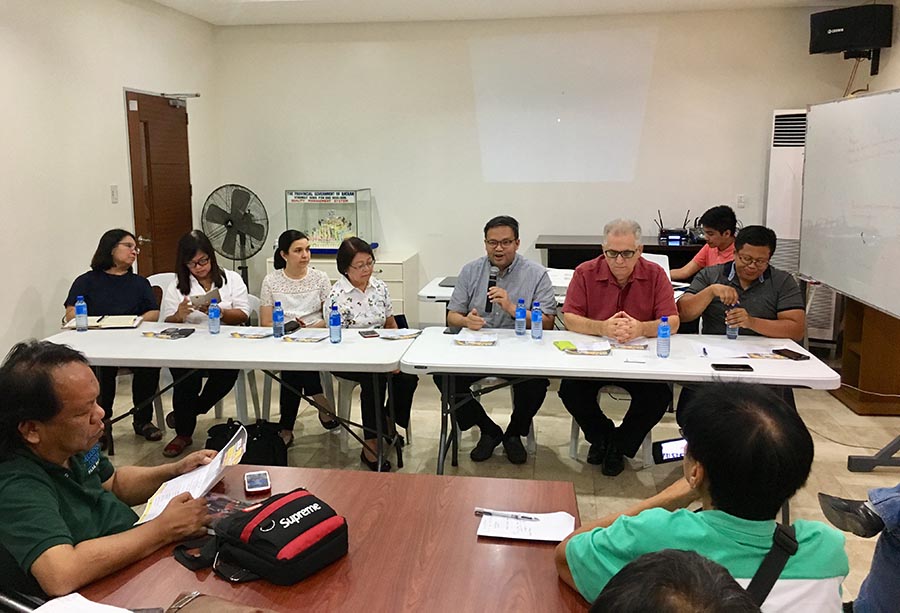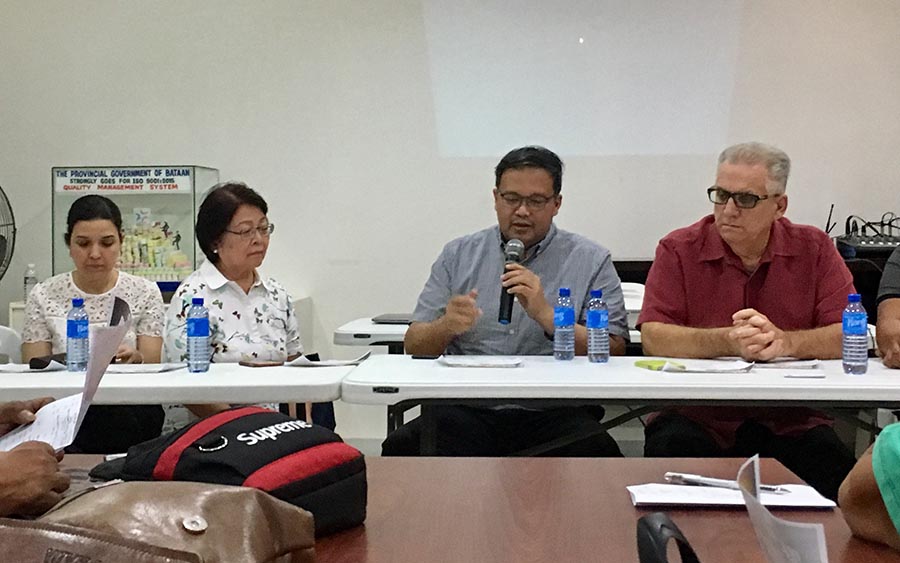BATAAN CAPITOL – The 76th annual commemoration of Bataan Death March on April 9, 2018 has no longer been a day of mourning for our fallen soldiers. It is now widely recognized as a day to rekindle the spirit of heroism that lies deep in the heart of every Filipino.
Mike Villa-Real, Head of Veterans Bank’s Corporate and Consumer Relations Division made the statement as they revealed the line-up of activities for this year’s celebration. Besides the highly-anticipated Bataan Freedom Run and Freedom Trail activities, “this year’s theme highlights the heroism of both soldiers and civilians during these tumultuous times,” Villa-Real told Bataan newsmen in a press conference, Tuesday afternoon.


Ricardo T. Jose, professor of History from the University of the Philippines, expounded on the heroism and courage shown by civilians during the Death March. These include the army reservists and civilian volunteers who were accepted into the US Army Forces in Far East (USAFFE) as well as the Filipino nurses whose names never made it to the history books.
“During the Death March, Filipino civilians showed their gratitude to the defenders of Bataan by giving them food and water – particularly in the towns of Samal, Lubao, Bacolor, San Fernando and others. They sympathized with their countrymen and the Americans, and came out of their homes with prepared food. The Japanese tried to drive them away and kicked the containers of water and while seizing some of the cooked food. Some of the food was even thrown into the dusty road. The civilians wrapped food in banana leaves and threw these to the prisoners of war since the Japanese kept them away.
Some of the civilians were rudely pushed about, and some may even have been bayoneted and killed. It was a unique show of solidarity between the civilians and the defenders, American, Filipino or whoever. Some looked for relatives or people they knew, but all unselfishly gave whatever they could even though risking life and limb,” Jose’s essay, delivered at the commemoration of the battle of Bataan, read.
The historian also added apart from giving the prisoners of war (POW) civilian clothes to change into, some brave elderly women snuck some of these POWs by hiding them under their very long skirts.
The same spirit was seen in other areas like Hagonoy and Capas, Tarlac. Besides smuggling food and water to aid the soldiers, some of them tried to help the soldiers escape by ferrying them into bancas (boats) and driving them away to safety. The townspeople also risked their own safety and that of their families by taking in escaped POWs and sheltering them until they were well enough to return to their own families.
The infamous Bataan Death March is recognized as one of the most atrocious war crimes in history. It involved getting some 72,000 captured American and Filipino POWs from Mariveles, Bataan to Camp O’Donnell in Capas Tarlac. The march spans about 66 miles, and the starving and sickly soldiers were made to walk under the scorching heat with barely any food or water.
During the March, the soldiers carried the wounded and helped them on their feet. They tried to not leave anyone behind as best as they could. The cruelty of the Japanese soldiers left more than 10,000 dead after the gruelling five-day journey. Strategic landmarks throughout the route include KM 00 in Mariveles, Bataan, the Train Station in San Fernando, Pampanga where the POWs were loaded in cramped box cars for transport, the station and National Shrine at Capas, Tarlac, and Dambana ng Kagitingan on top of Mt. Samat, Bataan.
Efforts are being made to create additional historial markers – including houses, churches, and schools which played a pivotal role in Philippine history.
Meanwhile, now on its 5th year, the Bataan Freedom Run (BFR) slated on April 8, 2018 (Sunday) invites running enthusiasts to follow the route of the historic Bataan Death March through the province of Bataan beginning at Kilometer Zero in Mariveles. The BFR features a 42-kilometer full marathon, a 21-kilometers half-marathon, as well as 10-kilometers, 5-kilometers, and 1-kilometer courses for all types of runner from pro-runners to kids and even pets. This year’s BFR aims to involve more participants from the military and police and members of the US Special Forces will also be invited to join the solo and/or team relays.
On the other hand, the Mariveles-San Fernando-Capas Freedom Trail will be held from March 24 – 25, 2018 and will see participants trace the entire route of the Bataan Death March from Kilometer Zero in Mariveles, Bataan all the way to Capas, Tarlac. There will be three event categories in the Freedom Trail: a 160-kilometer competitive team relay, the Ride for Valor which will be for big bikers, and the Freedom March which will be a torch-passing relay for youth groups. This is the second year that the Freedom Trail will be held.
Winners will receive cash prizes and medals, while finishers of the 42km marathon will have a finisher’s medal and a Bataan Freedom Run Finisher shirt.
Since 2014, the Philippine Veterans Bank (PVB), with PVAO and the Provincial Government of Bataan along with other partners have held the Bataan Freedom Run in honor of WWII veterans who endured the death march in 1942.
To register and find out more about the Bataan Freedom Run and the Mariveles-San Fernando-Capas Freedom Trail, visit http://www. bataanfreedomrun.com/


